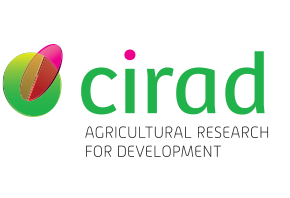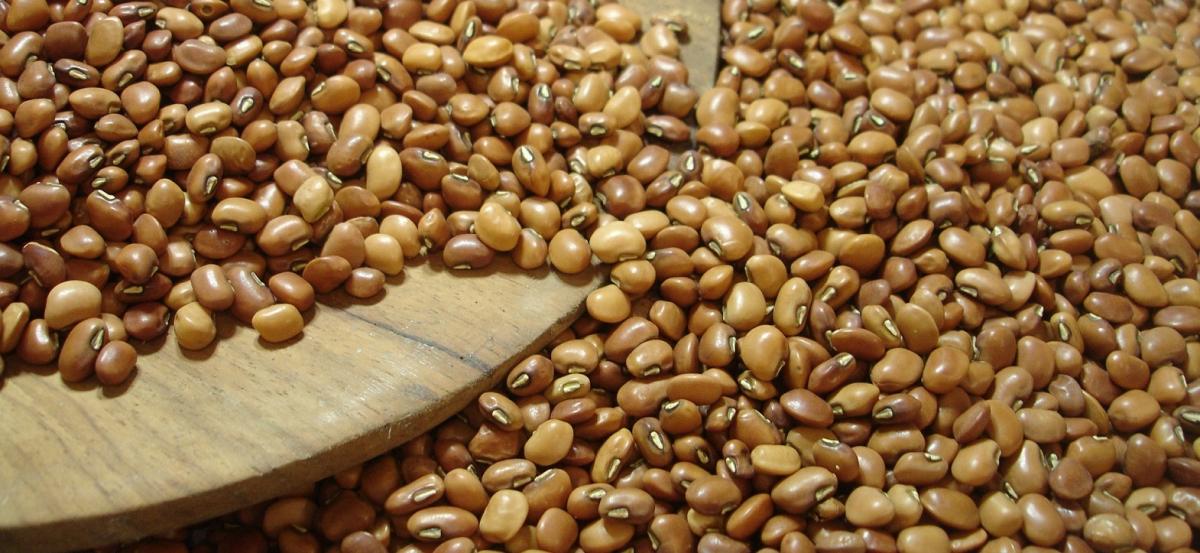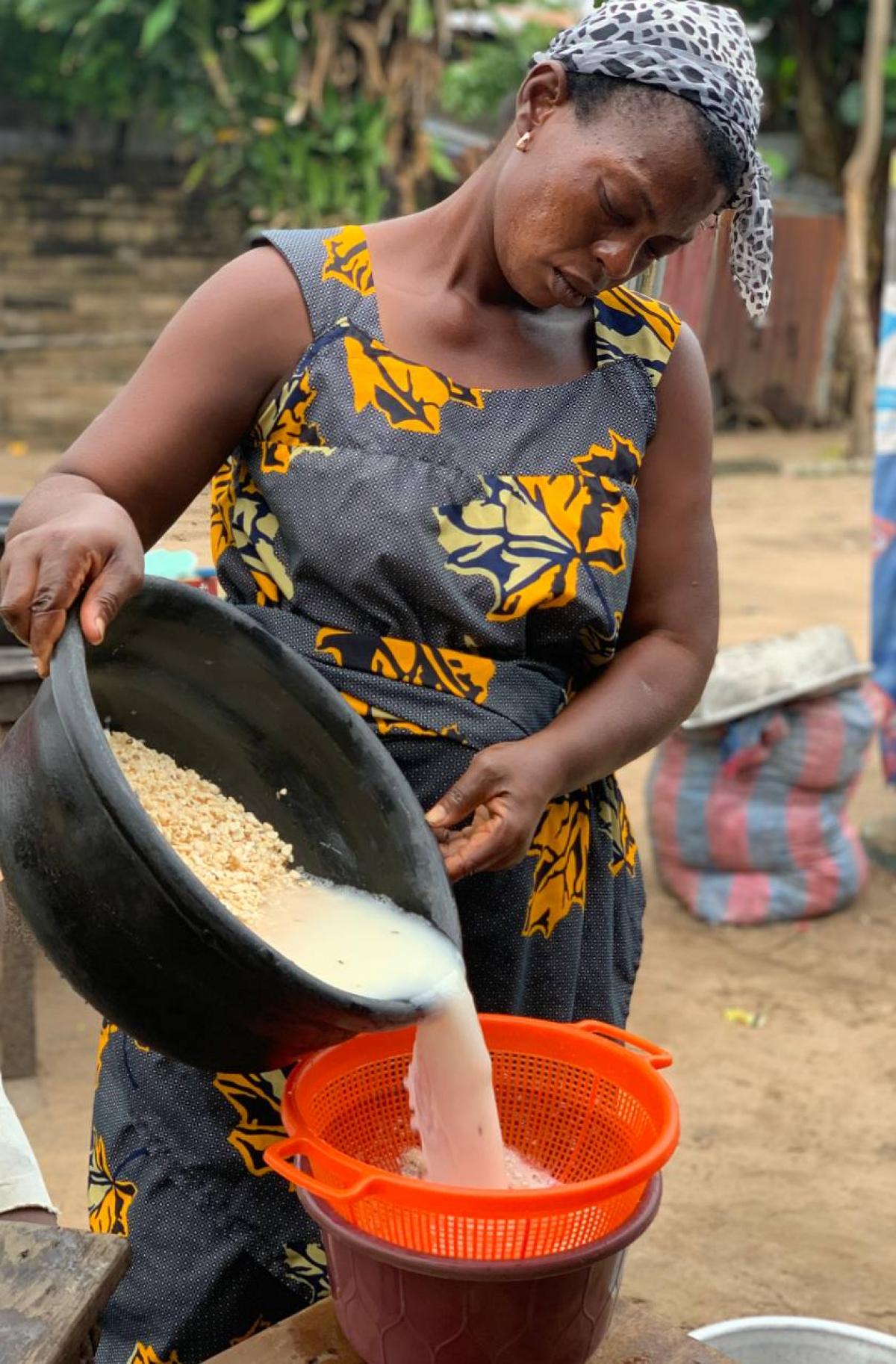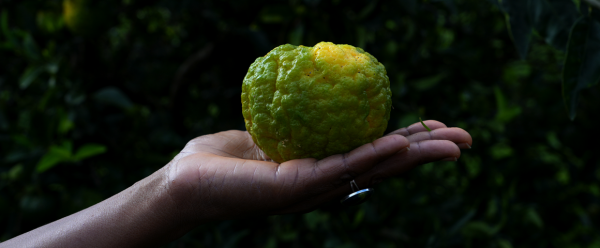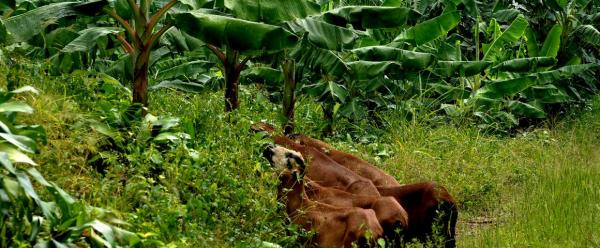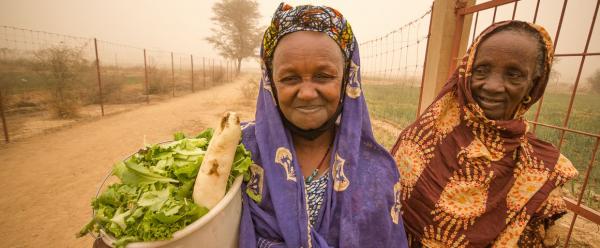Science at work 16 December 2025
- Home
- CIRAD news
- News
- Legumes nutrition security Africa
Legumes can boost food and nutrition security in Africa

Cowpea flower. Cowpea is a white bean that originated in tropical Africa © Hg Sanguere
The essentials
- Legumes are a common feature in African diets, and are the basis for many traditional dishes.
- They have definite nutritional advantages. However, their preparation could be optimized, to reduce both the work and time involved, and avoid the digestive issues they can cause.
Over two years, the LegAE (Legumes for agroecological transition and food security in Africa) project worked to identify the obstacles to and levers for developing legumes in four countries: Benin, Burkina Faso, Ethiopia and Senegal. The scientific teams involved, coordinated by CIRAD, focused on three legumes: soybean, groundnut and cowpea, a black-eyed white bean.
Legumes have nothing left to prove in terms of their agronomic benefits. In 2022, a meta-analysis of more than 12 000 observations in 153 countries showed a 20% average increase in yields in cropping systems including legumes. The figure is even doubled for Africa: a 43% yield increase, according to 844 field observations. However, the solutions chosen have to be suited to local contexts, farmers' know-how, and resources.
In terms of consumption, legumes are seen as particularly nutritious foods, rich in protein, fibre and certain micronutrients. However, they take a long time to prepare, sometimes cause digestive issues, and could be promoted more effectively to young people in urban areas.
The LegAE project studied each link in the value chain, from production to distribution, preparation and consumption. We look here at the later stages of the chain and the levers for improving legume-based product preparation and consumption.
Changing consumption habits, and nutritional advantages
"In Senegal, Benin and Burkina Faso, 80% of the households surveyed had eaten least one legume-based food in the week prior to our surveys", says Claire Mouquet-Rivier, Research Director at IRD and specialist in food and public nutrition issues in the global South. However, she points out that differences were observed from one country to another. In Benin, for instance, legume consumption is high and consistent, in both rural and urban areas. In Senegal, on the other hand, it is lower, and continuing to fall among young people.
There are several factors behind that fall, notably the disappearance of certain tradition dishes that are difficult to prepare. The researcher suggests several ways of maintaining and even increasing legume consumption, including publicizing and improving the image of these products among local people, by promoting traditional dishes, which are of interest in terms of their taste and nutritional value, and environmentally friendly. There is a second lever that concerns processing: preparation time, which is often long, could be shortened by means of innovative processes or pre-prepared products.
As Claire Mouquet-Rivier reminds us, legumes have many advantages on a nutritional level. Their protein content means they could be used to replace meat, without necessarily imitating it, while they also contain fibre, which is lacking in most diets. "In addition to certain vitamins, legumes also contain carbohydrates with a low glycaemic index, and bioactive compounds that can prevent or reduce high cholesterol or diabetes."
Reduced preparation times and better digestibility
Despite their many nutritional advantages, legumes may contain "anti-nutritional" compounds such as alpha-galactosides, or be contaminated y dangerous compounds such as aflatoxins. Christian Mestres, a process control engineer with CIRAD specializing in legume cooking and fermentation, says "the challenge for us is to maintain, and if possible increase, levels of certain high-nutritional-value compounds such as vitamins during food processing, while removing or preventing the formation of compounds deemed to be undesirable. In the case of cowpea, this primarily means alpha-galactosides, compounds that hamper digestion by humans. For groundnut, the problem is aflatoxins, which, as their name suggests, are toxic and are linked to the development of certain types of mould during preparation".
For cowpea, conventional preparation processes include soaking and cooking, which reduce alpha-galactoside levels. However, they take time. Legume processing in West Africa therefore faces a dual issue: preparation time on the one hand, and anti-nutritional compounds on the other, which both reduce the market for such products.
To address that dual issue, French and African scientists are working to dop ways of reducing antinutritional compound levels, for instance by pre-cooking at intermediate temperature (45-60°C), or by means of "short" germination. "In the laboratory, we can now break down negative compounds in less than 24 hours, thanks to optimized soaking and germination", Christian Mestres explains. "These processes also increase levels of some positive compounds. However, we still need to test them with processors on the ground."
Aflatoxins are mycotoxins, which regularly contaminate food in the event of mould. In 2023, the EU set an upper limit for levels of these molecules in various foodstuffs, to control levels and thus prevent their ingestion. The LegAE project, for its part, has worked with a Senegalese partner to build a procedure for diagnosing postharvest groundnut drying practices that will limit aflatoxin contamination.
In urban areas, it is primarily women who prepare and sell legume-based foods, in small shops or on the street. However, they face difficult working conditions (they have to transport heavy loads and preparing their products generates toxic fumes) and a lack of recognition in terms of public policy.
In Cotonou, Benin, the LegAE and ProPulse projects have helped to develop intermediate products such as cowpea flour, which shortens the time required to prepare some foods such as fritters, which are very popular. They have also worked with women processors and a local equipment manufacturer to design a mobile preparation and sales unit, the "niébétruck" (cowpea truck). This equipment improves hygiene, makes the women's work, easier and optimizes energy consumption thanks to a high-performance stove, while being both easily recognizable and promoting the local culinary heritage. This work was carried out in collaboration with Beninese partners, the University of Abomey-Calavi and the Laboratoire d'analyse régionale et d'expertise sociale (LARES).

